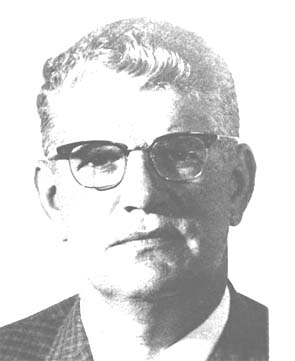Dan Mitrione (Daniel Anthony Mitrione)

Dan Mitrione was a police officer in Richmond, Indiana, from 1945 to 1947 and joined the FBI in 1959. In 1960, he was assigned to the US State Department’s International Cooperation Administration, going to South American countries to teach “advanced counterinsurgency techniques.” A. J. Langguth, a former New York Times bureau chief in Saigon, claimed that Mitrione was among the US advisers teaching Brazilian police how much electric shock to apply to prisoners without killing them. Langguth also claimed that older police officers were replaced “when the CIA and the U.S. police advisers had turned to harsher measures and sterner men” and that under Mitrione as the new head of the US Public Safety program in Uruguay, the United States “introduced a system of nationwide identification cards, like those in Brazil… [and] torture had become routine at the Montevideo [police] jefatura.” From 1960 to 1967, Mitrione worked with the Brazilian police, first in Belo Horizonte then in Rio de Janeiro. He returned to the US in 1967 to share his experiences and expertise on “counterguerilla warfare” at the Agency for International Development (USAID), in Washington D.C. In 1969, Mitrione moved to Uruguay, again under USAID, to oversee the Office of Public Safety (OPS). Dan Mitrione was also in the Dominican Republic after the 1965 US intervention.
In this period the Uruguayan government, led by the Colorado Party, had its hands full with a collapsing economy, labor and student strikes, and the Tupamaros, a left-wing urban guerilla group. On the other hand, Washington feared a possible victory during the elections of the Frente Amplio, a left-wing coalition, on the model of the victory of the Unidad Popular government in Chile, led by Salvador Allende, in 1970. The OPS had been helping the local police since 1965, providing them with weapons and training. It is claimed that torture had already been practised since the 1960s, but Dan Mitrione was reportedly the man who made it routine. He is quoted as having advocated using “the precise pain, in the precise place, in the precise amount, for the desired effect.” Former Uruguayan police officials and CIA operatives stated Mitrione had taught torture techniques to Uruguayan police in the cellar of his Montevideo home, including the use of electrical shocks delivered to his victims’ mouths and genitals. He also helped train foreign police agents in the United States in the context of the Cold War. It has been alleged that he used homeless people for training purposes, who were executed once they had served their purpose.
As the use of torture allegations grew and the tensions in Uruguay escalated, Mitrione was eventually kidnapped by the Tupamaros on July 31, 1970. They proceeded to interrogate him about his past and the intervention of the US government in Latin American affairs. They also demanded the release of 150 political prisoners. The Uruguayan government, with US backing, refused, and Dan Mitrione was later found dead in a car, shot twice in the head and with no other visible signs of maltreatment (beyond the fact that during the kidnapping, Mitrione had been shot in one shoulder, a wound that had evidently been treated while in captivity). Tom Golden, a career army intelligence operative detailed to the CIA and assigned to the US Embassy in Montevideo, was a personal friend of Mitrione who worked closely with Uruguayan officials to try to secure the release of Mitrione and prevent his execution. After Dan Mitrione’s death, Golden disputed the torture-training allegations in closed-door testimony to the Senate Intelligence Committee. In 1987, two years after being released from prison, the leader of the Tupamaros, Raúl Sendic, said in an interview that Dan Mitrione had been selected for kidnapping because he had trained police in riot control, and as retaliation for the deaths of student protestors. He did not mention the accusations of torture. In addition, Sendic also revealed that Mitrione’s death was unintended; the Tupamaro leaders had decided to keep Mitrione alive and hold him indefinitely instead of killing him if the government continued to refuse their demands.
However, on August 7, 1970, just a week after the kidnapping, the Uruguayan police raided the house where the Tupamaro leadership was staying and captured Sendic and the others. A short time later, he said, the replacement leadership, which also knew of the plan to keep Dan Mitrione alive, was also captured. “Those captured lost all contact with the others,” he said, “and when the deadline came the group that was left with Mitrione did not know what to do. So they decided to carry out the threat.” In spite of Sendic’s memories told almost 17 years after the events and after many years’ imprisonment, just a few days after Mitrione’s funeral a senior Uruguayan police officer, Alejandro Otero, told the Jornal do Brasil that Mitrione had been employed to teach the police to use “violent techniques of torture and repression.” Moreover, evidence of his secret activities would later emerge, mostly through Cuban double agent Manuel Hevia Cosculluela. In his book, Hevia related that Mitrione had built a soundproofed room in the cellar of his house in Montevideo in which he assembled selected Uruguayan police officers to observe torture-technique demonstrations. Hevia did not say specifically what Mitrione’s direct part in those demonstrations was but later publicly stated that the OPS chief had “personally tortured four beggars to death with electric shocks.”
Born
- August, 04, 1920
- Italy
Died
- August, 10, 1970
- Montevideo, Uruguay
Cause of Death
- gunshot wounds

